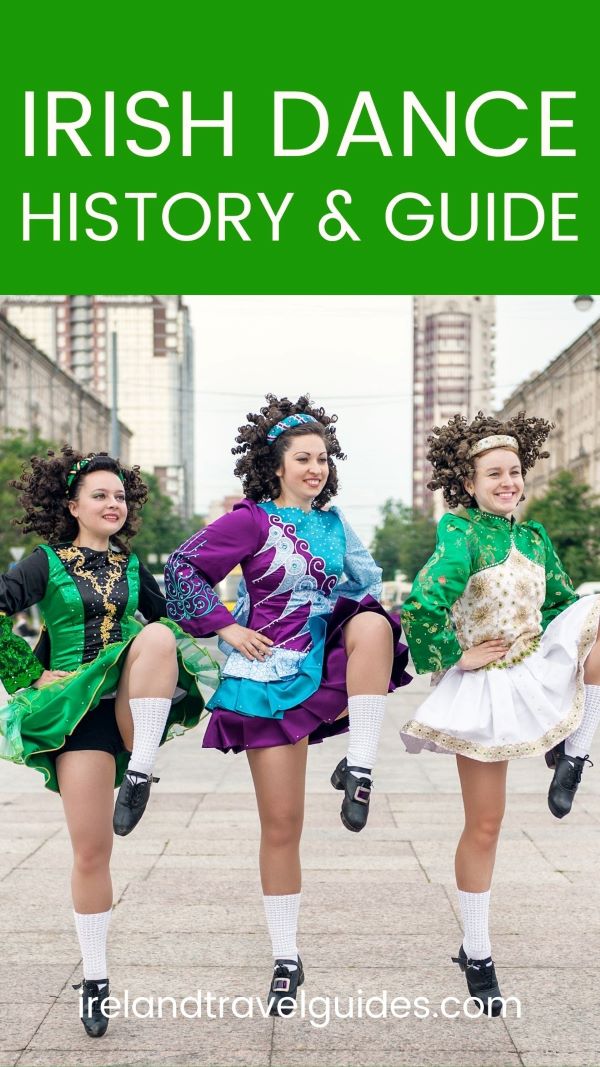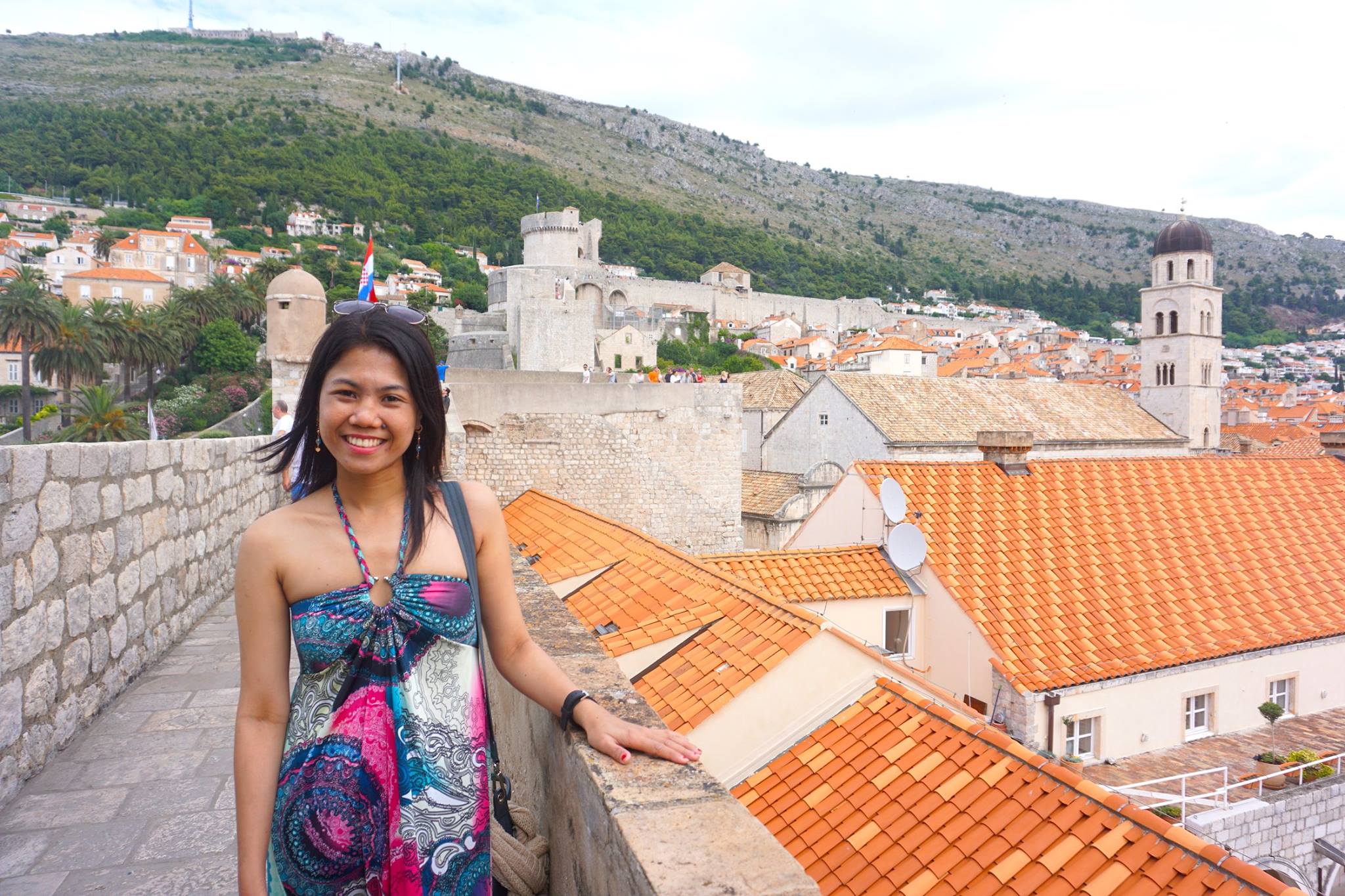Like the Irish language and traditional Irish music, Irish dance is an important element of Ireland’s heritage and culture.
Many Irish children participate in Irish dancing as an extracurricular activity, and it is always prominently displayed during Irish events such as St. Patrick’s Day.
Things you'll find in this article
Irish Dance: History And Guide

In this guide, we’ll try to cover everything you need to know about Irish Dance.
The Irish Dance
Traditional Gaelic or Celtic dance traditions developed in Ireland, and are known as Irish dance or Irish dancing. It can be done solo or in groups of up to twenty expert dancers.
Irish dance is primarily a social dance in Ireland, but it can also be used for official performances and competitions.
Irish Dance is notable for the dancers’ rigid upper bodies and sophisticated footwork.
Irish dancers do not use their arms or hands to emphasize their footwork, as they do in other dance disciplines. This is a distinct feature that makes Irish Dance performances fascinating to watch.
History of the Irish Dance
Many records from the seventh and eighth century were destroyed by the Vikings, thus there are scant references to the early history of Irish dancing. Early Druids are said to have danced as part of their pagan ceremonies.
Since the Celts arrived from Central Europe some 2000 years ago, dance has played a significant role in festivals.
When Ireland converted to Christianity around 400 AD, music and dance became more popular.
There were literary references to circle dances, dancers in formation, dancers greeting Royalty, as well as singing and dancing to harp or bagpipe music Aristocrats and peasants alike attended the dance, which was regularly performed at wakes.
The modern Irish words for “dance,” rince and damhsa, didn’t appear until the 16th century. The few existing evidence come largely from travelers to Ireland.
One of them was a fourteenth-century hymn penned in the South of England encouraging his audience to “come ant daunce wyt me in Irlande.”
The first native Irish documentary record of dancing is an account of a Mayor of Waterford’s travel to Baltimore, County Cork in 1413.
There were guests who “went to the floor” to celebrate Christmas Eve.
The Norman invasion in the twelfth century most likely brought the circle dance tradition to Ireland, as it was performed throughout Norman strongholds at the time.
According to seventeenth-century records of dance in Ireland, it was extremely popular at the time. A source from 1600 mentions the “rinnce fada,” also called the “long dance” or “fading.”
This dance, performed to a jig melody rather than a specific piece of music, became the traditional climax of Irish balls at the end of the seventeenth century.
By the 1760s, the Irish dance tradition had developed its hornpipe rhythm, and the entrance of the violin from Europe ushered in a new breed of “dancing master.”
Traditional Irish music and dancing are said to have evolved in lockstep.
It was eventually influenced by European dance traditions, particularly the Quadrille, despite its origins being unknown. Traveling dancing instructors taught across Ireland as late as the 18th and early 19th centuries.
Since local venues were often small, dances were commonly conducted on tabletops or even the tops of barrels.
As a result, these early forms have their arms tightly gripped at the sides and no lateral mobility.
As larger dancing facilities were accessible, styles began to include more body movement and movement around the dance floor.
Irish Dance Music
There is a long tradition of dance music in Ireland. Hundreds of years have passed since some of the dances were performed, bit like oral tradition, the music is memorized and passed down through generations.
Irish Dance music has symmetrical melodies that are usually eight bars long. The following are a few examples of popular Irish dance music:
The reel – The most well-known Irish dance music, the reel is either 2/4 or split common time (a quick 4/4 with primary powerful beats) and has two beats in each bar.
The majority of the movement is done in quavers. Two or three tunes are combined, with each tune being repeated two or three times before going on to the next.
The jig – This Irish Dance music features jumping steps and is dynamic dance. It’s quick and takes a long time to complete.
The most commonly used jig is the double jig. It is written in the 6/8 time signature and frequently employs three-quaver groups. A crotchet terminates the final bar.
- 6/8 or 12/8 for the single jig – A crotchet, followed by a quaver, is the most common rhythm.
- The slip jig – is danced in soft shoes and is in 9/8 time. It has graceful movements.
The hornpipe – The hornpipe moves at a leisurely pace. It is frequently done in heavy shoes and is in 2/4 or 4/4 time with dotted rhythms.
Irish Dance Styles
Ballet Up and Flat Down are two dance style methods that are used in many Irish dance types. These techniques illustrate how Irish dancers use their feet in a number of ways.
- Ballet up – This is a balletic style in which the toes are pointed and the steps are taken high on the toes’ balls or tips. In this techniqe, the body’s weight is lifted off the ground.
- Flat Down — This technique stresses a smooth, flat action with the heels. This way, the sound of the metal cleats is amplified as the body’s weight sinks into the floor.
Basic Dance Steps
The basic steps of Irish Dance are based on its two major styles or techniques.
- Chasse – It’s based on the Ballet Up technique and means “to chase.” The Irish dancer takes a step with the right foot while the left foot “chases” the right foot in three counts. The “1-2-3” method is commonly used.
- Cabriole – The cabriole is another step from Ballet Up that involves leaping into the air while the left calf beats under the right calf that is extended forward in the air.
- Flat Down – This is an Irish dance step in which a dancer’s right foot twists and shuffles over the floor as the left foot hops into the air.
- Shuffle – This step involves stamping the entire foot and tapping one toe behind the other foot, which bears the weight of the body.
Irish Dance Types
From the two basic techniques, here are the different types of Irish Dance, each with a distinct history and background.
Ceili Dancing – Ceili dancing dates back to the early 1500s in Ireland. It’s a multi-couple folk dance.
Each pair dances with each other as well as the rest of the group, changing partners regularly. Ceili dancing features extended limbs and pointed toes.
Set Dancing – This Irish dance is the country’s version of the quadrille, a traditional court dance. Four couples, arranged in a square, are usually needed to perform this dance.
Then, two couples at a time, go around the square, swapping places. The dancers use the entire flat part of their feet in ceili, with the exception of a few low kicks and flourishes.
Step Dance – Stepdancing is an Irish dance that can be done solo or in groups. The dancers here keep their upper bodies stiff.
Their feet and legs, on the other hand, conduct a sequence of exceedingly fast hops, high kicks, and intricate footwork.
Sean-nós Dancing – Sean-nós is distinguishable from other Irish dances by its footwork, which is parallel and mostly touches the ground.
A relaxed upper body is indicated by swaying hips and arms. Because improvisation is encouraged, Sean-nós is significantly less formal and organized. This dance is also popular among solo dancers.
Irish Dance Costume
Female dancers usually dress up in their “Sunday Best” in the early days of Irish dance, mostly long dresses or skirts paired with blouses.
Male dancers, meanwhile, either wore shirts paired with an Irish clan kilt, or a long coat, shirt, vest, and briques (calf length pants) with leggings.
Clothes worn by Irish dancers have changed over time, and dancers today wear a range of outfits.
Common Attire
- Traditional Celtic dance – Male dancers perform in traditional shirts and kilts, while female dancers wear blouses and long skirts.
- Modern Irish Dance – Female dancers wear short costumes in vibrant colors, and their arms are almost always covered. Trousers and a blouse with a colorful ribbon knotted around the waist are worn by modern Irish male dancers.
Footware
Irish dancers’ footwear is determined by the genre of dance they are performing.
- Flat Down step – Male and female dancing shoes contain metal cleats on the toes and heels and are typically black leather oxfords with laces and a leather strap to keep the shoe on the foot.
- Ballet Up dance – Male dancers wear black leather shoes with soft soles for flexibility, while female dancers wear black leather “Ghillies.” Irish dancers can perform dance steps on the balls of their feet or the tips of their toes thanks to the supple leather of Ghillies.
Irish Dance Competition
One of the finest ways to appreciate and see Irish dance is to go to competitions. In Ireland alone, there are a slew of tournaments.
Competitions are classified into categories based on their location, age group, and level of expertise, with competitions spanning from local to regional to national.
Ireland’s most prominent regional competition is the ‘Oireachtas.’ During a competition, a dancer’s methods, style, timing, and the sounds they make with their footwork will all be evaluated.
The Irish Dancing Commission founded the annual World Championship of Irish Dancing. In 1950, it began in Dublin but quickly outgrew the city.
The World Championships started in the north of Ireland and ended in the south. From then on, the event increased in popularity and spread over the world.
This competition is still running today, and has attracted more than 6,000 dancers from 30 countries.

Hi, I’m Christine – a full-time traveler and career woman. Although I’m from the Philippines, my location independent career took me to over 60 countries for the past 12 years. I also lived in 4 continents – from the Caribbean, South East Asia, Africa and now in Europe. But despite living in several countries, my love for Ireland remains the same. A country that had been a part of my life since I was 14 because of my love for Irish music and bands. Ireland Travel Guides was born because of this passion and hopefully, in some little ways, this website will be able to help you on your next trip to Ireland.



Who Invented Halloween? History and Tradition - Ireland Travel Guides
Monday 30th of August 2021
[…] celebrations. Often held during the last night of October, these fun parries are filled with music, dance, drinks, and […]